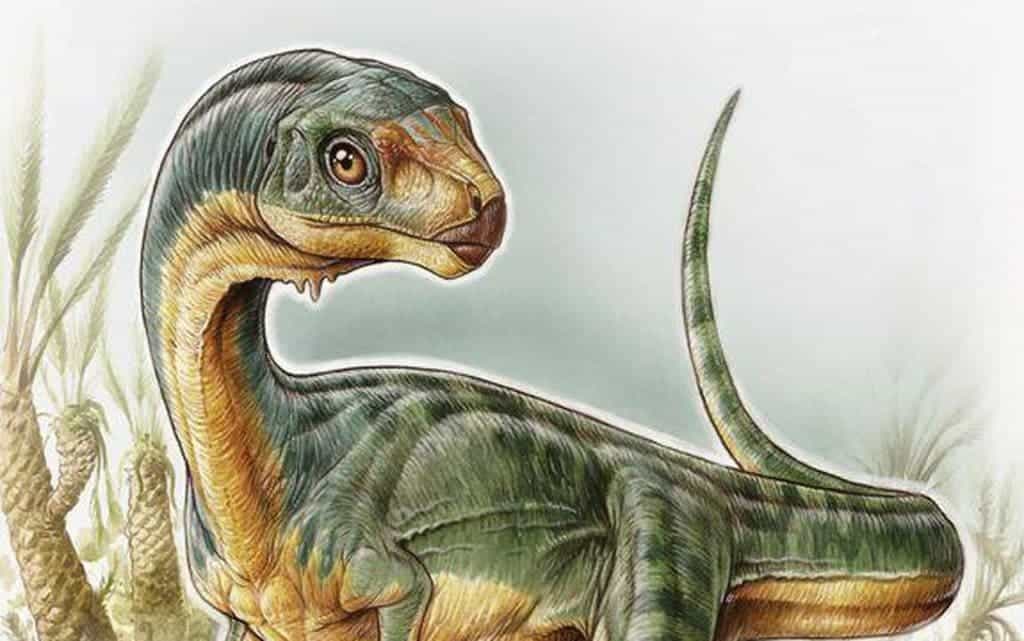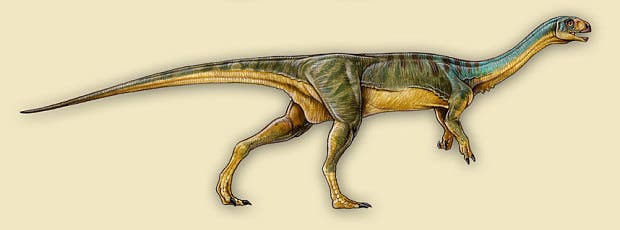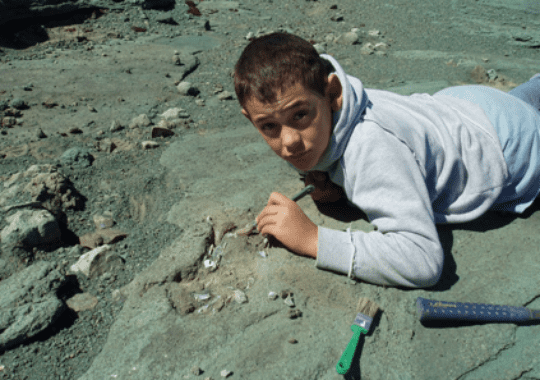A seven year old has discovered the fossil of a turkey-sized dinosaur that roamed South America over 140 million years ago. The tiny dinosaur was related to T-Rex, but had few similarities to it; aside for its size, the dinosaur was a vegetarian, munching on plants instead of terrorizing other creatures.
At the end of the Jurassic period, the Earth was very different from what it is today. Average temperatures were a whopping 3 degrees Celsius higher than today, there was virtually no frozen landmass, and of course, dinosaurs ruled the planet. But while most dinosaurs were huge and terrifying Chilesaurus diegosuarezi was nothing of sorts.
It had short arms and hands with two fingers, like T-Rex, but feet that resembled long-necked dinosaurs. It could grow up to ten feet, but the discovered specimen was about as big as a turkey. It was part of the same group as Velociraptor and Tyrannosaurus, from which modern birds evolved, but it’s just strange.
“Chilesaurus is so unexpected, so drastically different than anything else we’ve seen before. It’s an anatomical Frankenstein,” says Lindsay Zanno of the North Carolina Museum of Natural Sciences in Raleigh.
The species really riddled paleontologists, who have rarely seen such a hybrid and enigmatic dinosaur. So strange was the dinosaur that initially, scientists believed they were dealing with several different species.
“It’s like a T. rex that’s been shrunk but not shrunk equally,” says Pete Makovicky, an associate curator and dinosaur specialist at The Field Museum in Chicago, who was not involved in the new find. “This animal would’ve looked more silly than fearful … more similar to an ostrich than to T. rex.”
The fossil was actually discovered 11 years ago, when Diego Suarez was only 7 and he was accompanying his geologist parents on an expedition, and the little boy playing actually discovered the dinosaur, who was named in his honor – a remarkable case of beginner’s luck.
“Out of nowhere, two small things appeared. … They were fossils,” Suarez says by email. He ran to show his mother. His parents, he says, “were amazed. You (can) imagine it was, to them, like wining the lottery.” The family sent the fossils to dinosaur specialists in Argentina.
In terms of evolutionary significance, Chilesaurus seems to throw a curveball. Its ancestors were meat eaters, its living relatives were meat eaters, but it ate plants. It had vertebrae and front limbs like T-Rex and velociraptor, but its feet, ankle and some of its pelvis looked like they belonged to a completely different branch of plant-eating animals. In a way, it’s like a platypus – a creature that embodies distinctive traits from entirely different species.
Martin Eczurra, a PhD student at Birmingham University said:
“Chilesaurus can be considered a ‘platypus’ dinosaur because different parts of its body resemble those of other dinosaur groups due to mosaic convergent evolution. In this process a region or regions of an organism resemble others of unrelated species because of a similar mode of life and evolutionary pressures.”
It might also provide some insight into evolution itself.
“Chilesaurus provides a good example of how evolution works in deep time and it is one of the most interesting cases of convergent evolution documented in the history of life. It comes as false relationship evidence may arise because of cases of convergent evolution – such as that present in Chilesaurus.”
Journal Reference: Fernando E. Novas et al. An enigmatic plant-eating theropod from the Late Jurassic period of Chile. Naturedoi:10.1038/nature14307












